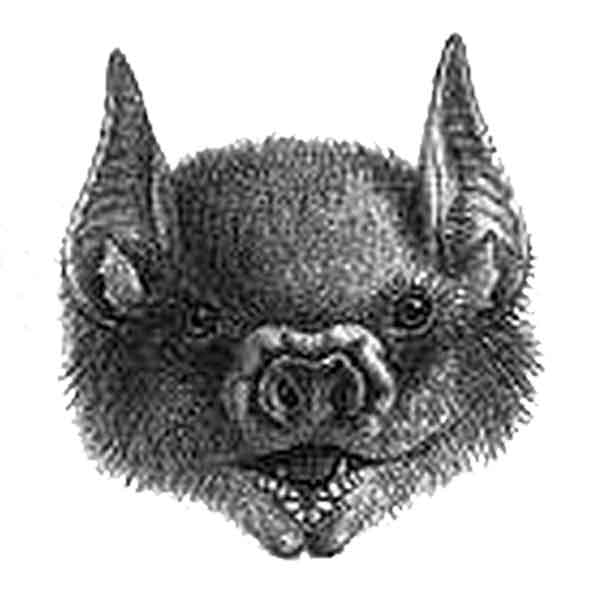
Superregnum: Eukaryota
Cladus: Unikonta
Cladus: Opisthokonta
Cladus: Holozoa
Regnum: Animalia
Subregnum: Eumetazoa
Cladus: Bilateria
Cladus: Nephrozoa
Superphylum: Deuterostomia
Phylum: Chordata
Subphylum: Vertebrata
Infraphylum: Gnathostomata
Megaclassis: Osteichthyes
Cladus: Sarcopterygii
Cladus: Rhipidistia
Cladus: Tetrapodomorpha
Cladus: Eotetrapodiformes
Cladus: Elpistostegalia
Superclassis: Tetrapoda
Cladus: Reptiliomorpha
Cladus: Amniota
Cladus: Synapsida
Cladus: Eupelycosauria
Cladus: Sphenacodontia
Cladus: Sphenacodontoidea
Cladus: Therapsida
Cladus: Theriodontia
Cladus: Cynodontia
Cladus: Eucynodontia
Cladus: Probainognathia
Cladus: Prozostrodontia
Cladus: Mammaliaformes
Classis: Mammalia
Subclassis: Trechnotheria
Infraclassis: Zatheria
Supercohors: Theria
Cohors: Eutheria
Infraclassis: Placentalia
Cladus: Boreoeutheria
Superordo: Laurasiatheria
Ordo: Chiroptera
Subordo: Yangochiroptera
Superfamilia: Noctilionoidea
Familia: Phyllostomidae
Subfamilia: Brachyphyllinae
Genus: Brachyphylla
Species: Brachyphylla cavernarum
Subspecies (3): B. c. cavernarum – B. c. intermedia – B. c. minor
Name
Brachyphylla cavernarum Gray, 1833
Type locality: St. Vincent (Lesser Antilles, UK).
References
Gray, 1833. Proceedings of the Zoological Society of London, 1833: 123.
Conservation status: IUCN: Brachyphylla cavernarum (Least Concern)
Distribution
Puerto Rico
Virgin Islands and throughout Lesser Antilles south to St. Vincent and Barbados
Vernacular names
English: Antillean Fruit-eating Bat.
The Antillean fruit-eating bat (Brachyphylla cavernarum) is one of two leaf-nosed bat species belonging to the genus Brachyphylla. The species occurs in the Caribbean from Puerto Rico to St. Vincent and Barbados. Fossil specimens have also been recorded from New Providence, Bahamas.
Taxonomy
Three subspecies of B. cavernarum are recognized. B. c. cavernarum is the largest of the subspecies and occurs from St. Croix to St. Vincent. B. c. intermedia is of intermediate size and occurs in Puerto Rico and the Virgin Islands with the exception of St. Croix. B. c. minor occurs in Barbados and is characterized by its small size.[2]
Physical description
The Antillean fruit-eating bat has white to yellow-white hair at the base with darker coloration in the dorsum. Mature individuals measure from 65 to 118 mm (2.6 to 4.6 in) with a forearm length ranges of 51 to 69 mm (2.0 to 2.7 in) in length. The average weight is 45 g (1.6 oz).[3]
Ecology
The Antillean fruit-eating bat occurs in Puerto Rico, the Virgin Islands and the Lesser Antilles north to St. Vincent and Barbados. Individuals roost in a variety of settings, which include unused buildings, caves, dense tree tops, crevices, large wells, and cliffs. Sites without direct sunlight are preferred by the species, although large colonies have been found in sunlit areas. The species occurs in dry arborescent vegetation on St. John.[2]
The Antillean fruit-eating bat's varied diet includes fruits, pollen, nectar, and insects. Fruits consumed in the wild include papaya, mango, Indian almond, manjack (Cordia spp.), royal palm, and sapodilla. In captivity, the species has been observed consuming bananas, apples, pears, melons, peaches, and the flowers of the Ceiba pentandra (kapok), sausage tree, royal palm, portia tree, and jatobá. Confirmed arthropods consumed include one mite species (Macronyssidae), two batfly species (Streblidae), one tick species (Argasidae), and two bat-mite species (Labidocarpidae). These bats feed in the canopy of the forest and on the ground.[2]
Behavior
The Antillean fruit-eating bat moves out from the roost synchronically one hour after sunset and 20 minutes after the Jamaican fruit bat (Artibeus jamaicensis). This synchronization is also evident when returning to the roosts, which happens just before the break of dawn.[2]
See also
Fauna of Puerto Rico
References
Rodriguez Duran, A.; Davalos, L. (2019). "Brachyphylla cavernarum". The IUCN Red List of Threatened Species. 2019: e.T2982A22039359. doi:10.2305/IUCN.UK.2019-1.RLTS.T2982A22039359.en.
Pierre Swanepoel & Hugh. H Genoways (15 December 1983). "Brachyphylla cavernarum" (PDF). Mammalian Species. American Society of Mammalogists (205): 6. doi:10.2307/3503901. JSTOR 3503901. S2CID 51780853. Archived from the original (PDF) on 4 February 2007. Retrieved 2006-11-27.
Mietzel, M. (2002). "Brachyphylla cavernarum". Animal Diversity Web. University of Michigan Museum of Zoology. Retrieved November 28, 2006.
Retrieved from "http://en.wikipedia.org/"
All text is available under the terms of the GNU Free Documentation License

